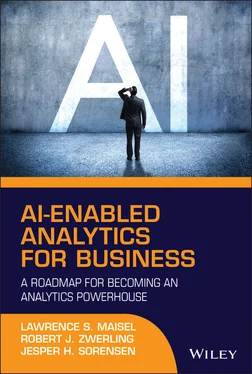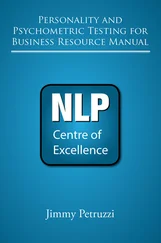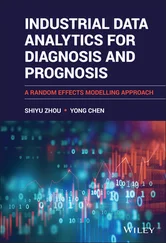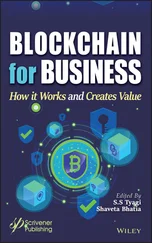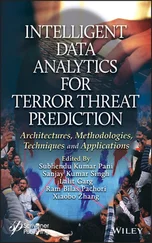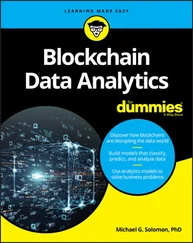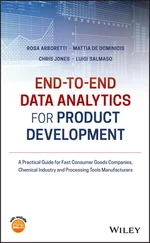Confirmation bias: People will be quick to seize on limited evidence that confirms their existing perspective. And they will ignore or fail to seek evidence that runs contrary to the coherent story they have already created in their mind.For example, imagine a business considering launching a new product. The CEO has an idea for the “next big thing” and directs the team to conduct market research. The team launches surveys, focus groups, and competitive analysis. However, to satisfy the CEO, the team seeks to confirm the idea, only accepting evidence to support the feasibility of the product and disregarding contradictory information.
Noise bias: According to Kahneman and Sibony, 7 noise is the variability when making judgments that go in different directions. For example, a company is building a new plant to manufacture its recently approved flu medicine. The plant is scheduled to be online in six months. The project team was asked to estimate (judge) when the first shipment could be expected, and the estimates ranged from 3 months ahead of schedule to 12 months behind schedule. This variability is the noise in judgment and significantly influences the decisions that follow and the operating impacts affected by these judgments.
These examples illustrate the risks inherent in individual biases that can steer decision-making in the wrong direction. They also demonstrate the need for unbiased AI-enabled analytics input to be a powerful counterbalance to make more effective decisions that improve business performance.
As humans, we cannot avoid our natural instinct that drives us to System 1 thinking for most of our daily lives. It is important for us to recognize when we are relying on it incorrectly for decision-making and the need to force System 2 thinking that incorporates AI and analytics as the preferred way to arrive at important business decisions and actions.
The era of human judgment for decision-making needs to evolve into a process that is more objective, insightful, and unbiased. AI-enabled analytics is the vehicle to introduce in the decision process to support or contradict human bias. As such, organizations must adopt an Analytics Culture that values the need for data-driven decisions as essential to assure and improve business performance.
1 1.The actual quote is, “Remember that all models are wrong; the practical question is how wrong do they have to be to not be useful”: George E.P. Box. Draper, N.R. (2007). Response Surfaces, Mixtures, and Ridge Analyses, 63. John Wiley & Sons.
2 2.Daniel Kahneman, an Israeli-born psychologist, and Amos Nathan Tversky, an Israeli cognitive and mathematical psychologist, received the Nobel Prize for Economics in 2002 for their integration of psychological research into economic science. Their pioneering work examined human judgment and decision-making under uncertainty and the discovery of systematic human cognitive bias and handling of risk.
3 3.Kahneman, D. (2011). Thinking, Fast and Slow. Farrar, Straus, and Giroux.
4 4.The term was introduced by Jerry B. Harvey in a 1974 article, “The Abilene Paradox: The Management of Agreement.” The name of the phenomenon comes from an anecdote that Harvey uses in the article to elucidate the paradox.
5 5.Schmidt, A. (2016). Groupthink. In: Encyclopedia Britannica. https://www.britannica.com/science/groupthink.
6 6.Sims, R.R. (1994). Ethics and Organizational Decision Making: A Call for Renewal, 55–56. Greenwood Publishing Group.
7 7.Adapted from Kahneman, D. and Sibony, O. (2021). Noise: A Flaw in Human Judgment. Hachette Book Group. As discussed with Kahneman and Sibony in: McKinsey. (2021). Sounding the alarm on system noise. Strategy & Corporate Finance Practice.
CHAPTER 3 Myths and Misconceptions About Analytics
Myths that are believed tend to become true .
—George Orwell 1
It is natural to accept “common knowledge,” particularly when our knowledge of a subject is limited, regardless of whether that knowledge is in fact true. For example, most of us have heard of a 97% consensus among scientists that humans are causing global warming or that inhaling secondhand smoke causes cancer. However, there are many peer-reviewed publications from sources ranging from Houston University to the Journal of the National Cancer Institute that dispute these claims, yet most of us have not heard of these contradictory findings. 2 , 3
Similarly, there is the need to dispel some common knowledge about implementing AI-enabled analytics. One example is that implementing analytics is complex and expensive. However, as we discuss in detail in the chapters that follow, the Roadmap to AI-enabled analytics is not hard, long, or expensive—it is simply disciplined.
Executives must take heed to avoid the “myths and misconceptions” about an Analytics Culture that include (i) data scientist misconception and myth, (ii) shot in the dark, (iii) bass-ackward, (iv) AI is not IT, (v) big is not better, and (vi) not now. As we will explain, data scientists, consultants, and IT all have roles in AI and analytics; but when implementing an analytic culture, the user is the primary player, with all others playing contributing roles. Too often, the roles are reversed, and the users are secondary.
DATA SCIENTIST MISCONCEPTION AND MYTH
Many businesses assume that implementing analytics requires data scientists, as they have the skills required for AI and know how to apply AI in the business. While the former assumption is true, the latter is a misconception.
With respect to knowledge of business, we note that the typical data scientist is essentially a programmer who knows statistics. Their realm is IT and not business, and the two domains are worlds unto themselves. For example, the following bullet points are an excerpt from a profile on LinkedIn for an IT Director of Digital Process Automation for a major insurance company. While there are lots of technical accolades, there is little discussion of business application or benefits, and no delineation of ROI:
Managing a global team of 30+ RPA Architects, Programmers, Data Scientists, Technical Business Analysts and onsite consultants from Appian, InfoSys, IBM, and Cognizant
Managing the implementation of a Business Process Management Tool (Appian) into an on-premises architecture to automate & streamline Client Onboarding
Integrating InfoSys's ML Platform (NIA) and continuing to release new stories in 6-week intervals to generate operational efficiencies
Not to belittle talent, but the wide expanse between IT and business results from the lack of common language and mission. The IT speak in the previous list illustrates that IT and the business are not in the same business—as most of us have experienced.
The business speaks of sales and expenses, whereas IT speaks of systems and technology. As such, it should be no surprise that the typical data scientist is limited in business acumen; thus, engaging the data scientist to implement AI in the business first requires educating them about the business.
For example, a Director of Inventory of a major technology company recounted an exercise in attempting to engage data scientists to develop an application that could yield insights from their data. The amount of time and effort it took to educate the data scientists about the business was so exhausting that the project was abandoned.
The myth of AI and analytics requiring data scientists emanates from the notion that business users lack requisite skills (formal training in mathematics, statistics, and specialized programming languages). This is certainly true for projects that use AI platforms where a combination of data scientists, database administrators, and application programmers is required. However, these complexities can be mitigated with modern AI-enabled analytics software tools that empower business users to engage analytics on their data without incurring the costs and complexities associated with platforms and tools that require specialized resources.
Читать дальше
